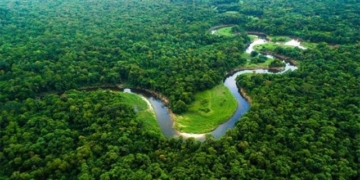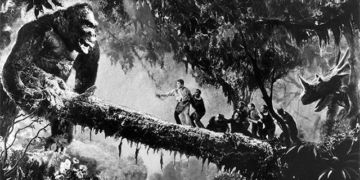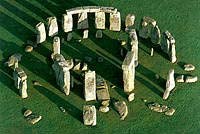 Among the hundreds of stone structures inherited by the English from ancient times, the ancient site of Stonehenge holds a special place with its gigantic stone blocks (some weighing up to 45 tons) and mysterious shapes (from a distance, they resemble large tusks)…
Among the hundreds of stone structures inherited by the English from ancient times, the ancient site of Stonehenge holds a special place with its gigantic stone blocks (some weighing up to 45 tons) and mysterious shapes (from a distance, they resemble large tusks)…
From a distance of a few hundred meters from Stonehenge, distinctive shapes can be seen, seemingly imprinted on the fields. As one approaches, these patterns in the grass appear to have been created with remarkable precision. The drawings in the Stonehenge area are particularly unique: the land here has not been disturbed, yet the structure of the grass blades within the circles has changed, as though the grass has “laid down” in a necessary order. These patterns that have emerged in this area have puzzled researchers from around the world. What meaning lies hidden within these patterns? Who left them for us, for what purpose, and why do they appear specifically near Stonehenge? To this day, none have been able to provide answers.
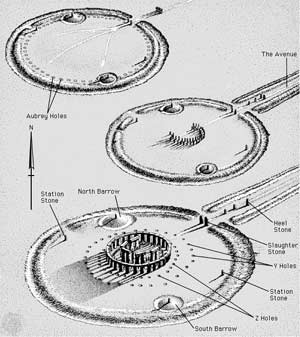 Stonehenge is one of the most mysterious places on the planet. To this day, it remains unclear who created those massive stones and for what purpose. Originally, the structure consisted of a circle made up of 30 upright stone blocks (each weighing 25 tons), connected by horizontal beams, with five pairs of stones with horizontal beams on top located inside the circle.
Stonehenge is one of the most mysterious places on the planet. To this day, it remains unclear who created those massive stones and for what purpose. Originally, the structure consisted of a circle made up of 30 upright stone blocks (each weighing 25 tons), connected by horizontal beams, with five pairs of stones with horizontal beams on top located inside the circle.
According to scientists, Stonehenge began construction in the 19th century BC and was completed a few hundred years later. At the quarries, large stones were carved out, then rolled or transported via rivers to the construction site. There, the stones were buried one meter into the ground. The stones here come in two varieties: sturdy blocks that form the outer circle of the structure and softer stones taken from coal seams and ores (thus they are called bluestones), which make up the inner circle of Stonehenge. Researchers indicate that the bluestones were sourced from the Preseli Mountains, located about 200 kilometers from Stonehenge, highlighting the immense effort and lives spent by ancient people to move them using only ropes and staffs.
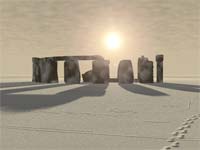 There are numerous theories regarding the builders of this enigmatic structure. The hypothesis suggesting extraterrestrial involvement in the construction of Stonehenge has garnered significant attention. During the period from 3000 to 1500 BC, many mysterious structures appeared in Europe, particularly on the islands of Great Britain, unlike anything else. These were not houses or churches, but rather stones forming very precise shapes (often circular). There is no written evidence proving that ancient people constructed these, and for modern observers, the shapes of these structures evoke images of unidentified flying objects (UFOs).
There are numerous theories regarding the builders of this enigmatic structure. The hypothesis suggesting extraterrestrial involvement in the construction of Stonehenge has garnered significant attention. During the period from 3000 to 1500 BC, many mysterious structures appeared in Europe, particularly on the islands of Great Britain, unlike anything else. These were not houses or churches, but rather stones forming very precise shapes (often circular). There is no written evidence proving that ancient people constructed these, and for modern observers, the shapes of these structures evoke images of unidentified flying objects (UFOs).
















































